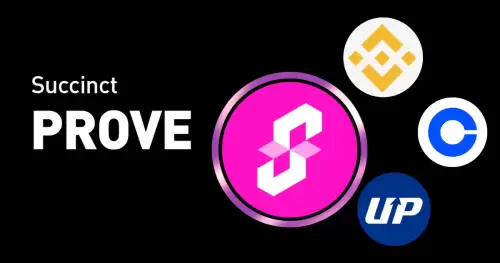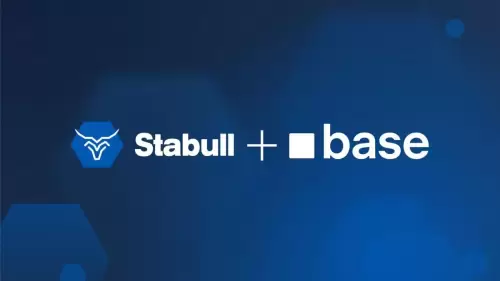 |
|
 |
|
 |
|
 |
|
 |
|
 |
|
 |
|
 |
|
 |
|
 |
|
 |
|
 |
|
 |
|
 |
|
 |
|
暗号通貨のニュース記事
Tokenization of real-world assets (RWAs) is evolving from an abstract concept to a practical financial tool
2025/05/04 20:04
Institutional interest in real-world asset (RWA) tokenization is heating up as several major firms are now testing and deploying blockchain infrastructure at scale.
The past week alone saw a flurry of announcements from both traditional financial institutions and blockchain-native firms advancing their RWA initiatives.
On April 30, BlackRock filed to create a digital ledger technology shares class for its $150 billion Treasury Trust fund. It will be using blockchain technology to maintain a mirror record of share ownership for investors.
The DLT shares will track BlackRock’s BLF Treasury Trust Fund (TTTXX), which may only be purchased from BlackRock Advisors and The Bank of New York Mellon (BNY).
The DLT shares will be transferable on a distributed ledger and will differ from the primary shares in terms of minimum investment and share purchase procedures.
In another development, Libre announced plans to tokenize $500 million in Telegram debt through its new Telegram Bond Fund (TBF). The fund will be available to accredited investors and usable as collateral for onchain borrowing.
The fund will invest in a portfolio of Telegram bonds, which will be secured by Telegram’s assets. The bonds will mature over a period of five years and carry an annual interest rate of 10%.
The week’s biggest headline came from Dubai, where MultiBank Group signed a $3 billion RWA tokenization deal with United Arab Emirates-based real estate firm MAG and blockchain infrastructure provider Mavryk. The deal is said to be the largest RWA tokenization initiative to date.
Speaking on the recent surge in RWA activity, Hashgraph CEO Eric Piscini said that the recent announcements are no coincidence as several factors are now converging to drive RWA tokenization.
“The recent announcements from Hashgraph, Libre, MultiBank Group, and other institutions mark a significant acceleration in the adoption of RWA tokenization. This isn't a coincidence. It’s happening because everything’s lining up,” Piscini said.
According to Piscini, the recent announcements highlight the growing interest from institutional investors in exploring new avenues for portfolio diversification and liquidity.
“With Trump’s administration showing a pro-crypto approach and the SEC and DOJ displaying greater leniency, there’s a renewed sense of optimism. This shift in attitude is crucial for encouraging foreign institutions to engage more actively in the U.S. crypto market,” he said.
Moreover, Piscini said that advancements in technological capabilities, especially in wallets, have also played a key role in driving tokenization adoption.
“In parallel, macroeconomic pressures are pushing institutions to search for efficiency and liquidity in traditionally illiquid markets.”
The role of Ethereum and emerging ecosystems
Ethereum continues to serve as the primary hub for RWA tokenization, thanks to its mature ecosystem, broad developer support, and robust infrastructure.
“Ethereum remains by far the most suitable blockchain for large-scale RWA issuance due to its unparalleled security, developer ecosystem, and institutional adoption. However, dedicated RWA-specialized ecosystems like Canton Network, Plume, and Ondo Chain are quickly building compelling alternatives,” said Marcin Kazmierczak, co-founder of RedStone.
According to Kazmierczak, these new ecosystems are focused on providing the legal, technical, and operational frameworks needed for seamless RWA tokenization.
“They are developing specialized tokenization protocols, compliance modules, and interoperability solutions to facilitate the integration of traditional assets with blockchain technology.”
The market value of tokenized U.S. Treasurys is $6.5 billion, with Ethereum holding the majority at over $4.9 billion, according to data from RWA.xyz.
Herwig Koningson, CEO of Security Token Market, said that companies like BlackRock have shown it’s possible to make large-scale tokenized products worth billions of dollars using more than one blockchain at the same time.
According to Koningson, this shows that the success of tokenizing assets doesn’t depend so much on which blockchain is used, but rather on what the company needs the system to do.
“This is why you will see many banks and traditional firms using permissioned blockchains or even private DLT systems. They are able to quickly build and deploy their own tokenized products without needing to rely on a public blockchain,” he said.
Challenges remain, but growth potential is huge
Despite the recent progress, several challenges remain in realizing the full potential of RWA tokenization.
Regulation continues to be a significant barrier, especially for risk-averse institutions requiring guarantees around compliance and privacy. Technical limitations also persist, chiefly the lack of interoperability between blockchain platforms.
However, Piscini said hybrid models are gaining traction by offering the privacy of permissioned systems with optional future interoperability with public chains.
Looking ahead, Piscini estimated that more than 10% of global financial assets could be tokenized by the end of the decade.
D’Onofrio made a more modest projection, estimating that between 5
免責事項:info@kdj.com
提供される情報は取引に関するアドバイスではありません。 kdj.com は、この記事で提供される情報に基づいて行われた投資に対して一切の責任を負いません。暗号通貨は変動性が高いため、十分な調査を行った上で慎重に投資することを強くお勧めします。
このウェブサイトで使用されているコンテンツが著作権を侵害していると思われる場合は、直ちに当社 (info@kdj.com) までご連絡ください。速やかに削除させていただきます。






























































